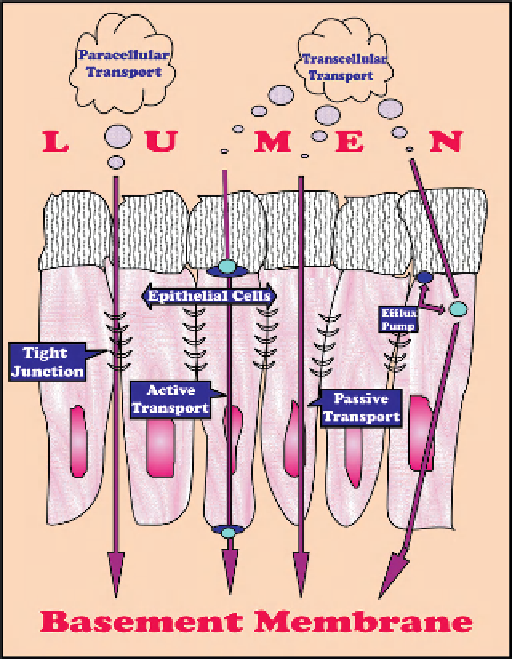Biomedical Engineering Reference
In-Depth Information
Figure
10.3
Mechanisms for
the transport of drugs
paracellular transport is limited, as tight junctions comprise only about 0.01% of the
total absorptive surface area of the intestine (villi)
[38]
.
10.3.2 Transcellular Absorption
Drugs pass through the intestinal epithelial cells (enterocytes) and require partitioning
across both the apical and the basolateral membranes. The transcellular permeability of
a peptide is a complex function of various physicochemical properties, including size,
lipophilicity, hydrogen bond potential, charge, and conformation
[39]
. This route is lim-
ited to the transport of relatively low-molecular-weight lipophilic drugs. Furthermore,
studies in humans have demonstrated that absorption by the transcellular route
decreases significantly in the colon (small intestine ascending colon transverse
colon), whereas no such gradient exists for the paracellular route
[40]
.
10.3.3 Carrier-Mediated Transport
Drugs interact with a specific transporter or carrier, in which the drug is transferred
across the cell membrane or entire cell and then released from the basal surface of

Search WWH ::

Custom Search